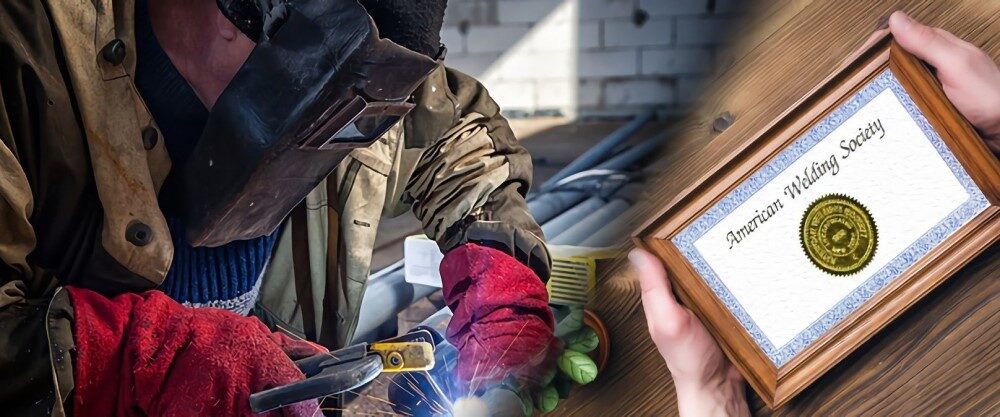Welding is a difficult craft that calls for perseverance, acute vision, and inventiveness. The welder needs to have a thorough awareness of the numerous methods and procedures employed in the sector, which may include different weld kinds, in order for the project to be successful. So, How to become a professional welder is something any welder wants to strive to be even better at.
One of the strongest substances found on Earth’s surface is metal. As a result, the methods for casting and molding metal into the machine and furniture parts you see and use every day have undergone amazing advancements. Welding is a process used in metal fabrication.
Metals can be easily joined together using welding rather than glue, nails, or other fusing methods. In addition to joining materials more quickly and effectively, welding is also a very reliable and affordable approach (compared to other methods).
Here welderprofessor will discuss the concept of welding, the different types of welding, and the process it performs. In addition, we also provide the skills required of a professional welder and more. How to become a professional welder? Come to our blog to better understand your favorite work!
1. What is Welding?
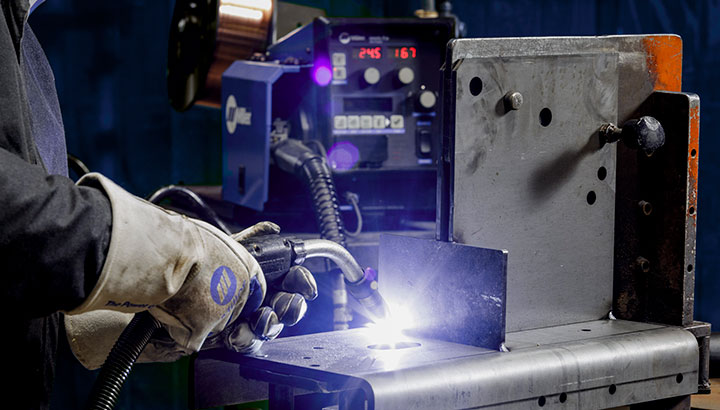
Concept of Welding
A junction is formed between two or more components during the production process of welding as the components cool. Welding is distinct from lower temperature processes that melt the parent metal, including brazing and soldering. Thermoplastics and metals are the most popular materials for welding, however wood can also be utilized.
- Metal welding: In most circumstances, applying heat and pressure simultaneously to the base material enables quick and effective metal welding. As was already explained, the shielding gas guards against contamination and oxidation in the molten metal or weld pool.
- Plastic welding: In plastic welding, the surfaces must first be prepped before applying pressure and heat. The materials are cooled after that.
- Wood welding: To weld wood, the material must first be inflated before being heated in the same way that linear friction action does.
A precise area of the parent metal is melted using a soldering iron or soldering iron. This procedure produces a bath of molten metal into which a new metal part can be easily grafted by applying high heat (sometimes together with filler material). Depending on the kind and thickness of the material, pressure can also be used to join metals (pressure welding).
Benefits of Welding
- Able to weld various materials.
- Simple additions and changes to existing structures.
- The aesthetic of the welds is beautiful, smooth, and glossy.
- Provides a clean, minimalistic design appearance.
- One of the approaches with the fastest crafting speed.
- This method is adaptable and is applied both inside and outside.
- This method is quite affordable in terms of materials, manufacturing, and equipment.
- This method is great for joining two materials together since it produces a lasting weld.
- Making long-lasting welds requires using the proper filler metal, which guarantees strength and endurance.
- Any shape and any orientation can be used to create it.
- It is employed in a number of industries, including construction and the car industry.
Disadvantages of Welding
- Expensive initial outlay.
- Calls for power supply and skilled workers.
- When done in accordance with safety and security protocols, it is risky.
- Because they are fixed joints, the weld needs to be cut to separate them.
- Due to uneven heating and cooling, parts may become distorted while being welded.
Application of welding
In many different industries, including construction, energy, aerospace, and automobiles, welding procedures are frequently employed. a variety of applications call for the joining of metal, thermoplastic, or wood. A burgeoning group of artists also employ it to produce their works.
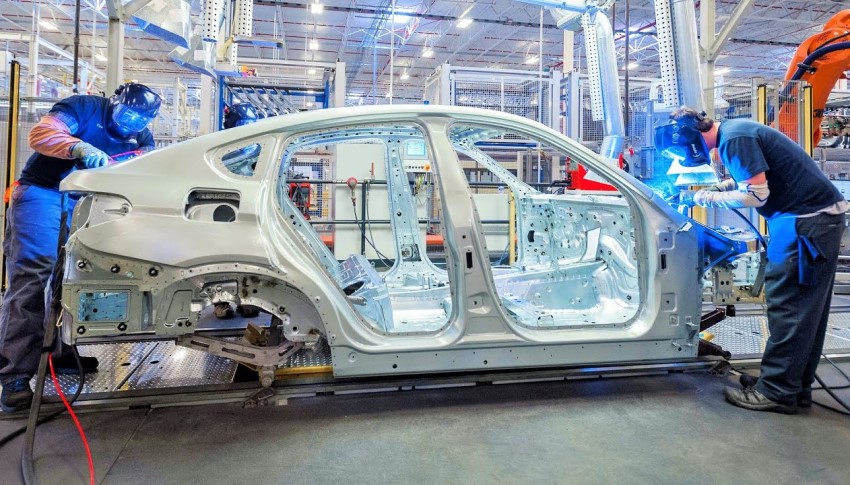
2. The Different Types of Welding
There are several procedures with a range of strategies available depending on the energy source employed. Forging welding was one of the first types of welding. Arc welding was invented after that. Welding techniques utilized today include electric arc, laser, gas flame, ultrasonic, friction, and electron beam.
One must exercise extreme caution when working with each technique because it has the potential to result in radiation exposure, burns, eye damage, electric shock, inhalation of toxic welding gases, and more.
Gas
Oxygen fuel welding, commonly known as oxyacetylene welding, is the most used type of gas welding. It is one of the oldest and most adaptable welding methods, but industrial applications have decreased recently. For welding pipes and tubes as well as for repair work, it is still often employed.
A welding flame with a temperature of roughly 3100 °C (5600 °F) is produced by the equipment, which is often inexpensive and straightforward. The flame is less concentrated than an electric arc, which causes the weld to cool more slowly. This can result in higher residual stress and weld distortion, but it also makes welding high alloy steels easier.
Arc
In these procedures, an electric arc between the electrode and the base material is created and maintained by a welding power source to melt the metal at the welding site. They can employ consumable or non-consumable electrodes and direct current (DC) or alternating current (AC). Sometimes a shielding gas, also known as an inert or semi-inert gas, and filler material are employed to protect the welding region.
Some common manual, semi-automated, and automatic procedures are included in this category. These include gas welding, metal active gas (MAG) welding, rod welding, tungsten inert gas (TIG) welding, commonly known as tungsten gas arc welding (GTAW), Flux core arc welding (FCAW), gas metal arc welding (GMAW), submerged arc welding (SAW), shielded metal arc welding (SMAW), and plasma arc welding.
Stainless steel, aluminum, nickel and copper alloys, cobalt and titanium are just a few of the metals that can be joined using these methods, which often make use of filler materials. Industries including petroleum, energy, aerospace, and the auto industry, among others, use arc welding methods extensivel.
SMAW
A welding rod or rod is used in shielded metal arc welding (SMAW), also referred to as rod welding. The rod contains flux and filler (allows the welding process and protects the weld). This welding is cost-effective and is used in construction, shipbuilding, field repair, mining, manufacturing, and aerospace.
GMAW
Gas metal arc welding, sometimes referred to as Metal Inert Gas (MIG) welding, utilizes a welding gun with an electrode wire running through it. The end result is an electric arc, which produces the heat required for welding. Additionally, it produces a shielding gas that safeguards the weld. This technique is simple and useful for manufacturing, automotive, industrial, and construction industries.
TIG
The arc is produced in this specific style of welding using a non-consumable electrode made of tungsten. TIG welding is one of the most popular styles of welding and results in a neat, smooth, and superior joint. Gas tungsten arc welding is used in sectors like aerospace, automotive, and the arts.
FCAW
Like MIG welding, FCAW is a good choice for general maintenance work and outdoor welding. Industrial welding, manufacturing, pipeline repair, shipbuilding, and manufacturing all use this technology. MIG and FCAW vary in that the latter uses tubular filler wire that contains flux.
SAW
SAW is a flux welding technique, however it’s different from FCAW in that the welding takes place beneath a granular flux layer. Because it emits fewer UV rays and welding fumes, this is one of the safest methods of welding. In shipbuilding, industrial production, and structural construction, SAW is the predominant welding method.
Energy Beam
Laser beam welding and electron beam welding are two examples of energy beam welding techniques that are relatively new yet have already become widely used in high-volume manufacturing. The main difference between the two processes, which are relatively similar, is their energy sources.
While electron beam welding is carried out in a vacuum and using an electron beam, laser beam welding uses a highly concentrated laser beam. Both have extremely high power densities, allowing for deep weld penetration and reducing weld zone size.
Electron
A beam of extremely fast electrons is used in this fusion process to mix the components. When the electrons hit the workpieces, their kinetic energy is transformed into heat, which causes the molten materials to fuse together. EBW is frequently used to link thick pieces, among other things. This implies that it might be used in a variety of sectors, including aerospace, nuclear power, automobiles, and railroads.
Laser
This method, which is used to join thermoplastic or metallic components, uses a laser beam to deliver concentrated heat perfect for barrow, deep welds, and high-speed joins. This technology is ideal for big volume applications, such those in the automotive industry, because to its simplicity of automation and rapid welding speed. When using electron beam coherence, laser beam welding can be done in air as opposed to a vacuum.
Resistance
By running an electric current through a resistance created by the contact of two or more metal surfaces, resistance welding produces heat. When strong currents (1000–100,000 A) are passed through the metal, small pools of molten metal are created in the weld area. Resistance welding techniques are generally effective and less toxic, although their use is relatively constrained and equipment costs can be costly.
This is a rapid procedure that is frequently applied in the automobile sector. Resistance spot welding and resistance line welding are the two subtypes of this procedure. Spot welding involves applying heat that is transferred between two electrodes to a tiny region while clamping together two workpieces. Similar to spot welding, seam welding uses rotating wheels instead of electrodes to produce a continuous leak-free weld.
Friction
Materials are joined using the friction welding technique through mechanical friction. On various welding materials, such as steel, aluminum, or even wood, this can be done in a number of different methods. Filler metals, fluxes, or shielding gases are not necessary for friction welding.
Heat produced by mechanical friction softens the combined materials, allowing for the formation of a bond as it cools. The precise procedure used, such as friction stir welding (FSW), friction stir spot welding (FSSW), linear friction welding (LFW), and rotary friction welding, determines how splicing takes place ( RFW).
Since friction is the best joining method for light aluminum alloys that are “non-weldable,” it is frequently employed in aircraft applications. In the industry, friction techniques are widely employed, and they are also being investigated as a way to join wood without the use of adhesives or nails.
Hyperbaric
Welders employ this method when working underwater. With the use of a soldering iron and flux, wet soldering prevents electrocution by forming bubbles that act as a shield. Gas welding, plasma arc welding, electroslag welding, atomic hydrogen welding (AHW), carbon arc welding (CAW), and energy beam welding are some more significant and frequently employed welding processes and techniques (EBW),…
3. The Equipment Used in Welder
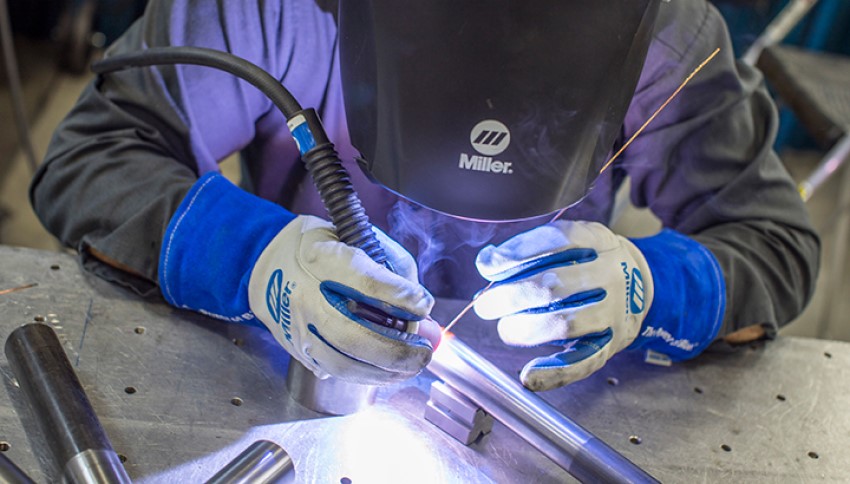
Any job needs to ensure labor safety, especially for dangerous jobs related to fire, electricity, mechanics, diving, construction,… Similarly, welding can be a dangerous job if you don’t wear safety equipment. The following safety gear is required for use at work by welders:
- Safety glasses
- Welding helmet
- Welding gloves
- Heat-resistant jacket
- Leatherwork shoes
- Earplugs
Welding is a specialized job that requires you to have many essential tools to ensure the welder works efficiently and conveniently. As a beginner welder or a professional welder, you need to know the equipment and tools required in the welding process. These include (but are not limited to) the following devices:
- Welding gun
- Welding torch
- Wire brush
- Chipping slag hammer
- Angle grinder
- Tape measure
- Welding magnets
- Soapstone marker
- Pliers
- C-clamps
- Electrode tip cleaners
- Flint strikers
- Cold chisels
- Screwdrivers
- Charged electrode
- Wire and electrode feed
4. Welding Process
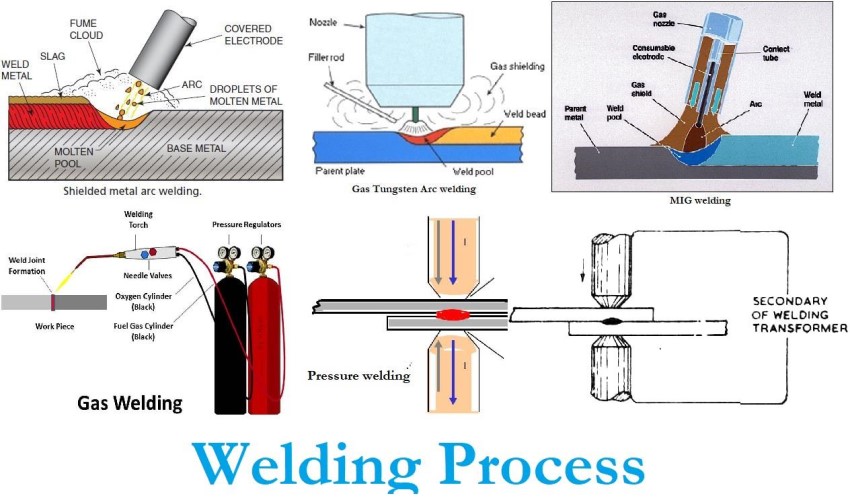
Without using glue, two materials are joined through welding. Arc welding and torch welding are the two main types of welding practiced today.
Arc welding
The workpiece and filler metal, which is also referred to as the rod, are melted together during arc welding using an electric arc. Connecting the ground wire to the weld material or other metal surfaces is necessary for arc welding.
The electrode conductor, a different wire, is inserted into the material to be welded. As the conductor moves away from the substance, an electric arc develops. It resembles the spark that occurs when the cable is unplugged from the car battery. The filler substance that serves as a glue for the pieces is also melted by the arc together with the workpiece.
Using filler to fill the weld demands steady hands and an attention to detail. The welder must continuously work small, steady back-and-forth motions into the junction to inject filler while the soldering iron melts. The weld’s distinctive appearance is a result of these motions. Poor welds can result from moving the arc too quickly or slowly, too closely or too far from the material.
Torch welding
Another well-liked welding technique is torch welding. In this procedure, the workpiece and welding rod are typically melted using an oxyacetylene torch. You can control the weld more precisely since the welder concurrently controls the torch and rod. Although torch welding is now less widespread in industry, it is still frequently employed for sculptures and maintenance tasks.
5. The Skills Needed for Welding
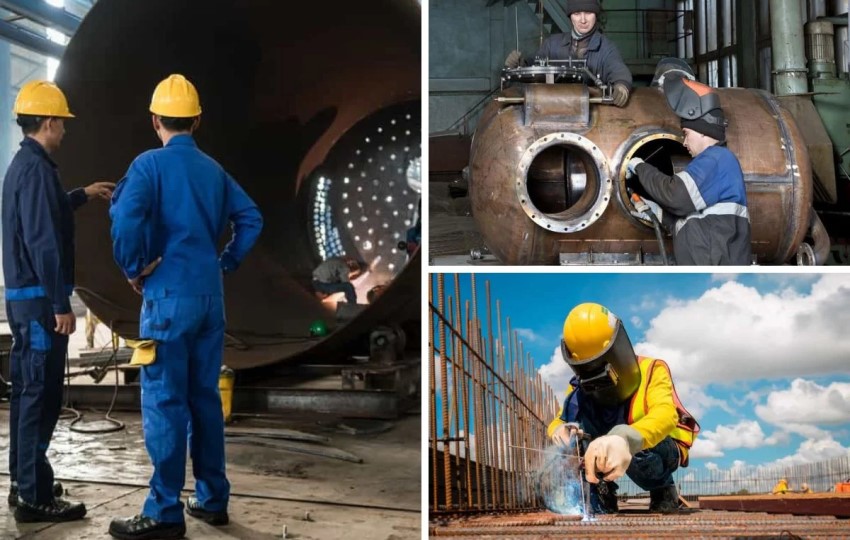
Weld design describes the methods used to attach or align metal components. It has been discovered that the quality and price of the finished weld are both impacted by the design of each junction. It can take particular consideration and ability to select the best joint design for the welding job.
Welders are experts who put metal components together using specialized equipment. Regardless of your prior work experience or educational background, learning the necessary welding skills can significantly increase your chances of career success. Through research and practice, you can identify the abilities that are crucial for this position.
Physical Strength and Endurance
Being physically fit and able to withstand challenging working conditions are great traits to have because welding may be a physically demanding profession. Welders frequently have to put up with difficult working circumstances because of the nature of the profession. Therefore, having good mental and physical stamina is quite advantageous to your profession.
You could have to lift a lot of weight and possibly large objects depending on your line of work. When welding, you can also have to work in challenging conditions, such as rain, snow, or other challenging conditions, and you might have to remain in one place for extended periods of time. In addition, getting into a position where you can do your job requires you to bend and twist. Additionally, you hold your torch stationary for extended periods of time, which calls for a solid grip.
Mathematical Skills
Successful welding demands strong arithmetic abilities. The majority of vocations demand you to use arithmetic to compute precise proportions, comprehend blueprints, create sketches, and carry out similar tasks. You’ll be considerably more effective in your role if you’re adept at sizing, reading designs, and comprehending 2D and 3D graphics.
If you frequently need to cut metal components and things to precise proportions as part of the welding process, math abilities will be extremely helpful. Overall, being able to understand mathematical concepts quickly will be very helpful to you in your search.
Stable Hands and Good Hand-Eye Coordination
Technically speaking, welding can be a difficult task. Golden hands and excellent hand-eye coordination are necessary for producing high-quality welds. One of the abilities that takes the longest to master while in an apprenticeship or trade school is this one.
It will take some effort to understand how various welds operate, maintain track of weld testing, learn how to keep your application steady, and get results that appear smooth and solid. Be ready to make poor welds and costly mistakes initially.
Attention to Detail
Welders must be very precise while working on some structures, such as bridges, aircraft, and ships, because poor welding can be dangerous to people. Additionally, some welders operate in dangerous environments, therefore it’s critical for them to be aware of their surroundings to prevent accidents. You may readily improve your welding skills if you have a keen eye for detail.
Good welders must always be mindful of the minor details, such as thoroughly examining their equipment before use, wiping off grease and rust from workpieces, and wearing the appropriate PPE. To ensure a robust weld, it’s also important to follow directions precisely and adhere to best practices. Having the knowledge and skills to recognize variations in the flow of molten metal is also necessary.
Technological and Tool-handling skills
Welders work on a variety of projects, and the tasks they perform depend on the particulars of each project. In your job as a welder, you may run into a lot of different scenarios. This means that in order to become familiar with a variety of tools and equipment, choose the best one for each work, and then successfully use it to perform the assignment, you need profound tech skills.
Welders need to be able to acquire new technologies and methods, as well as be able to set up machine tools and take them apart once the job is done. These are some of the most crucial technology-related skills. Additionally, you must have previous expertise with grinders and metal finishing equipment as well as hand tools. You also require knowledge, the ability to select the best tools for each case, and competence with robotic welding equipment.
Teamwork Abilities
While a welder may just work on a single piece of equipment, most welding tasks are integrated into bigger systems. Being a team player and having effective communication skills with your teammates are crucial. Your manager and any other team members in the factory or location of business.
The secret is to be a dependable employee that communicates when they have questions, assists teammates, uses their time efficiently, and collaborates well with others. You will undoubtedly become a useful member of any welding team by developing these talents.
6. How to become a professional welder?
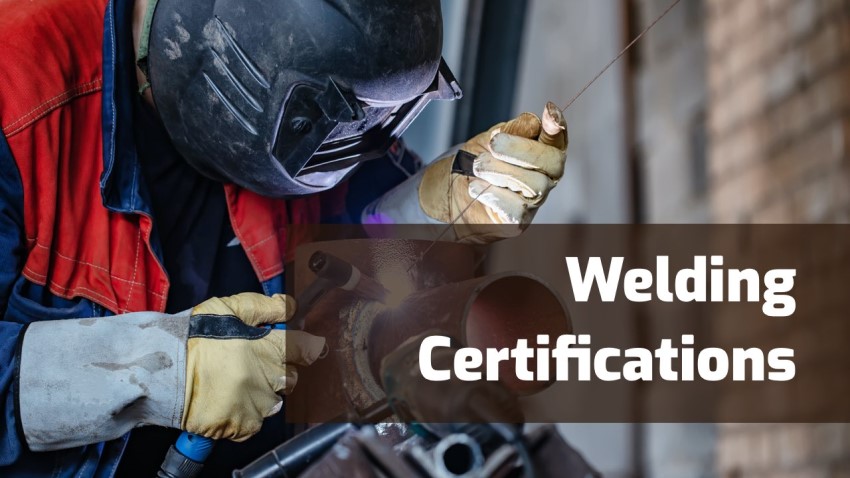
A formal program in welding technology can be How to become a professional welder with all the right skills and qualifications. But first, you must have complete knowledge from basic to advanced about welding and what is related to welding. Then there’s the practice of trying and having someone monitor your speed and level. Starting with a first job also helps you practice and have more experience and lessons.
Start Learning Specifics
There are numerous different vocations that need welding, and certain industries or job categories employ it more frequently than others. Learn the fundamental categories, and if you’re going after a particular industry, learn the precise kind. The better, the more you learn. There are endless things that may be learnt, but the most crucial thing is to comprehend the various methods of joining materials and their advantages and disadvantages.
There are four primary forms of welding: MIG – Gas Metallic Arc Welding (GMAW), TIG – Gas Tungsten Arc Welding (GTAW), Rod – Shielded Metal Arc Welding (SMAW) and Drug Core Arc Welding – Flux-core welding (FCAW). Additionally, there are a few less popular fields like friction, gas, and air MIG as well as a few more specialized ones that we won’t discuss.
Following a basic education of the material you wish to weld. Let’s start by delving into the specifics of a significant specialty, such as TIG welding for stainless steel or MIG welding for steel (the most popular welding for steel). Learn the steps involved and become familiar with the concepts, procedures, and terminology related to that kind of welding.
By mastering these principles, you may make sure that you’re ready for practical experience. It is nevertheless beneficial to make sure you are on the right path before commencing the course if you intend to learn to weld at a training facility.
Practical Experience
Even though all the theory you study before soldering will be very helpful, it cannot replace actual hands-on practice. But be warned that soldering is extremely risky before you start. Electric shocks, burns, and arcing eyes are all frequent injuries in the welding industry, especially for newcomers. Be careful, and only begin soldering when there are more experienced people nearby.
A weld can deceive an untrained eye. With just minor visual variations, a poor weld can appear extremely similar to a good one. Only a skilled welder can perceive the weld’s internal quality, which affects its strength. This internal quality is invisible to the human eye. Make sure a skilled welder can give you feedback.
As you discover a means for yourself to learn, along with having someone by your side for protection. Ask someone to check or follow up later so they can advise you on what’s right or wrong. You must learn from that person or other coworkers who have excellent ideas for the task because this is vitally necessary.
Additionally, you can take part in an apprenticeship program. Through apprenticeship programs, several businesses provide on-the-job training where you’ll perform basic welding with the intention of getting the chance to learn more. Your degree of recognition will rise as you complete more hours in apprenticeship programs.
Practice
How to become a professional welder? Practice is indispensable when it comes to a welder, professional or not. You should practice regularly to understand the progression of your welding career through each stage.
Each person’s time commitment varies, ranging from a few days to several weeks of welding. However, just because you can consistently produce a few welds that are as nice as what the professionals performed for you doesn’t indicate you are now a good welder. It is quite simple to produce welds of consistently high quality, but there are many weld positions, materials, and environmental factors that must be taken into account.
Some of them are difficult to understand and require a variety of abilities and further knowledge. Different wire thicknesses, welder settings, gas adjustments, welding speeds, and pre-welding preparation are necessary for them. Spend as many hours as you can practicing as many different things in your area of expertise to become well-rounded and effective at your work.
Certifications
Once you have a job, or even before you do if you’re having trouble finding one, certifications are crucial to your career. What certification is required will depend on the kind of welding you do and the nation you are in. Although some types of welding may not need certification, most employers will give certification to potential employees.
Depending on regional standards, you will often need to update your certification every six to twelve months by passing a soldering and a written test. To work in the welding sector, you will require the appropriate certificates. The AWS Certification for Welding Engineers, which covers a range of practical issues, fundamental engineering, and some geometry, is a requirement for weld engineers. The welding engineer passes this test and earns the title of Certified Welding Engineer (CWE).
Wrapping Up
With no additional bonding materials required, welding joins two materials together. Solder unites two workpieces directly, as opposed to brazing and soldering, which need a lower melting point binder. Welding is the chosen method for heavy metal smelting work in fields or applications like aerospace, shipbuilding, mining, automotive, oil and gas, and industrial manufacture.
Why do you want to become a professional welder? There are many reasons to answer this question, maybe the main thing is that becoming a professional welder opens up a wide career path for you. You might be wondering what abilities are necessary to learn welding technology and launch a successful career as a professional welder if you’re thinking about enrolling in a welding apprenticeship or welding school.
How to become a professional welder? You may require further training to develop the abilities required to carry out a wide range of activities if you know you have an interest in a certain type of welding or work in an industry that demands a specific type of welding. Always learn new welding techniques and strive for professional welding certification. Doing as many different jobs as possible is also our advice.
Maybe you want to know:
